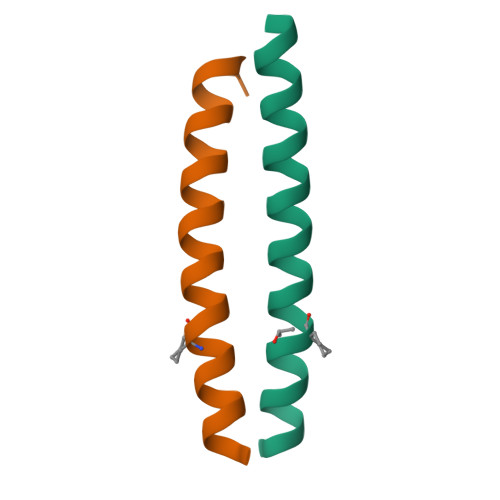Origins of Structural Flexibility in Protein-Based Supramolecular Polymers Revealed by DEER Spectroscopy.
Tavenor, N.A., Silva, K.I., Saxena, S., Horne, W.S.(2014) J Phys Chem B 118: 9881-9889
- PubMed: 25060334
- DOI: https://doi.org/10.1021/jp505643w
- Primary Citation of Related Structures:
4TL1 - PubMed Abstract:
Modular assembly of bio-inspired supramolecular polymers is a powerful technique to develop new soft nanomaterials, and protein folding is a versatile basis for preparing such materials. Previous work demonstrated a significant difference in the physical properties of closely related supramolecular polymers composed of building blocks in which identical coiled-coil-forming peptides are cross-linked by one of two subtly different organic linkers (one flexible and the other rigid). Herein, we investigate the molecular basis for this observation by isolating a single subunit of the supramolecular polymer chain and probing its structure and conformational flexibility by double electron-electron resonance (DEER) spectroscopy. Experimental spin-spin distance distributions for two different labeling sites coupled with molecular dynamics simulations provide insights into how the linker structure impacts chain dynamics in the coiled-coil supramolecular polymer.
Organizational Affiliation:
Department of Chemistry, University of Pittsburgh , Pittsburgh, Pennsylvania 15260, United States.




















